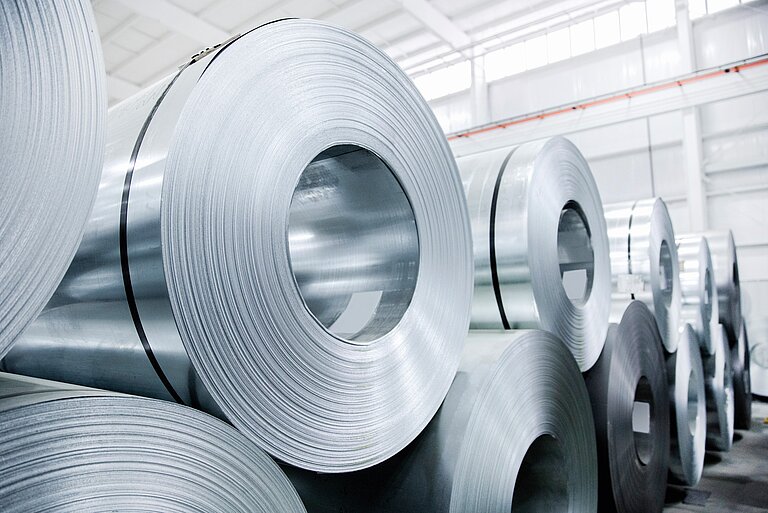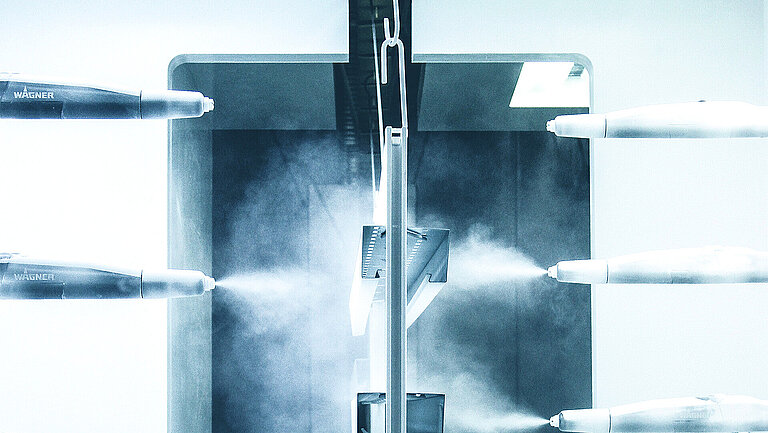Piece galvanizing
There are two methods of hot-dip galvanizing:
One is batch galvanizing, which is also known as hot-dip galvanizing or discontinuous hot-dip galvanizing. The second is strip galvanizing, also known as continuous hot-dip galvanizing or sendzimir galvanizing.
Flat products with a material thickness of more than 2 mm and all welded parts are batch galvanized at Niedax.
Piece galvanizing according to DIN EN ISO 1461
In batch galvanizing, finished components are immersed in liquid zinc after a wet chemical pre-treatment. The entire surface, including all corners and edges, is immersed in liquid zinc at a temperature of approx. 450 °C. This process is also known as hot-dip galvanizing. This process is also known as hot-dip galvanising.
A distinct iron-zinc alloy layer forms on the steel with a pure zinc layer on top. This protects the entire component against corrosion, including all corners, cut edges and hollow profiles, both inside and out. For this reason, hollow profiles or scooping components require ventilation holes due to the process.
The minimum coating thickness depends on the material thickness. According to DIN EN ISO 1461, it is 45 µm up to 1.5 mm material thickness, 55 µm up to 3 mm material thickness and 70 µm up to 6 mm material thickness.
Depending on the alloying elements silicon and phosphorus, the surface is glossy, matt or rough. In small holes, a film is sometimes formed by the cooled zinc. The freshly galvanized surface is bright and shiny. Parts galvanized at high temperature are grey, e.g. screws. When hot-dip galvanizing at 530 - 560 °C, so-called high-temperature galvanizing, the molten zinc becomes thinner and is suitable for small parts that cannot be hung up, e.g. screws.
Minimum thickness of zinc coatings according to DIN EN ISO 1461:
For a workpiece with a material thickness of 4 mm, for example, an average zinc coating thickness of 70 µm and a localised zinc coating thickness of 55 µm is required.
You would like to determine the required zinc thickness? Our calculator provides a guide value.
Simply enter the material and the corresponding thickness of the workpiece.
The protective effect of the coating is paramount. However, optical requirements must also be met. For example, visual inspections are carried out with the naked eye at a distance of more than one meter. Zinc tips, if they pose a risk of injury, are not permitted and must be repaired in the same way as defects. Flux residues and zinc ash residues must be removed before delivery. Zinc ash is produced by oxidation of the zinc bath surface and hard zinc, a mixture of zinc and iron, which accumulates on the bottom of the zinc bath. Flux increases the wettability between the steel surface and the molten zinc. It usually consists of an aqueous solution of chlorides.
The zinc layer thickness is decisive for meeting the requirements of the standard.
Standards and requirements
DIN EN ISO 1461 is the basic standard for batch galvanising. It applies throughout Europe and, as an ISO standard, also has global significance. DIN EN ISO 1461 specifies all the requirements that must be met for the hot-dip galvanising of manufactured individual parts in a discontinuous process. It regulates the properties of the zinc coating, appearance, test methods, repairs and acceptance criteria.
The standard applies exclusively to components made of iron and steel that are dipped discontinuously in a zinc melt of at least 98% zinc. Niedax also applies DASt guideline 022, which specifies the composition of the molten zinc in detail.
Corrosion protection
With batch galvanising, the corrosion protection period depends on the atmosphere and the immediate local environment.
There is extensive long-term experience with batch galvanised coatings in accordance with DIN EN ISO 1461, which achieve a protection period of 50 years or more in normal industrial and urban atmospheres. Detailed information on protection periods in different atmospheres can be found in DIN EN ISO 14713-1.
Application examples from the Niedax program
- Welded suspension standards and brackets
- Cable and pipe clamps
- Profiles with a material thickness of more than 2 mm
- Cable trays and ladders
- Long-span cable trays and conductors
- other products, provided that increased requirements are placed on corrosion resistance (outdoor exposure without rain protection).
Conclusion
Piece galvanizing is the most durable galvanizing process. It is suitable for components with welded joints and outdoor installations, as protection periods of several decades must be achieved here. Piece galvanizing offers long-lasting and maintenance-free corrosion protection. In addition, reworking on the construction site as a result of damage to the surfaces during transportation, storage and installation is possible and permitted by standards.






